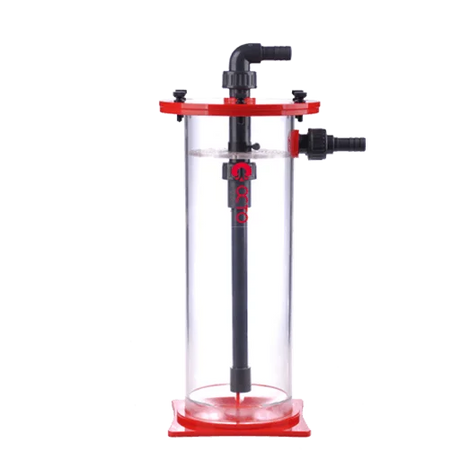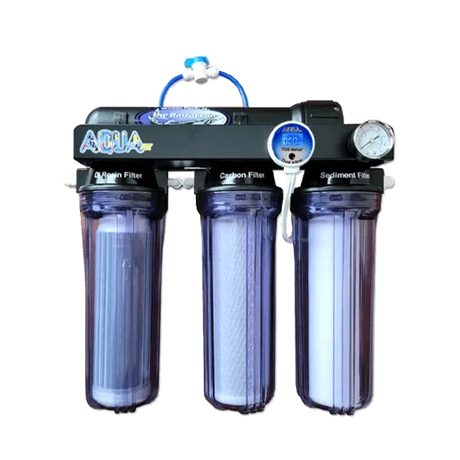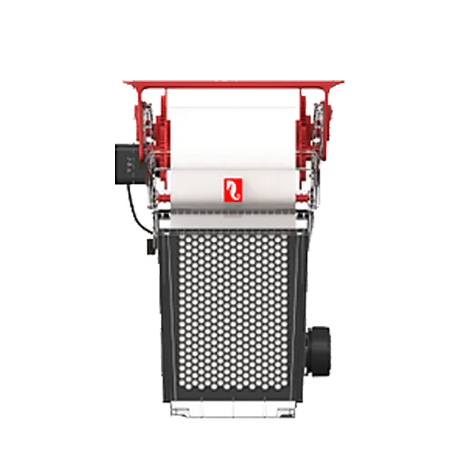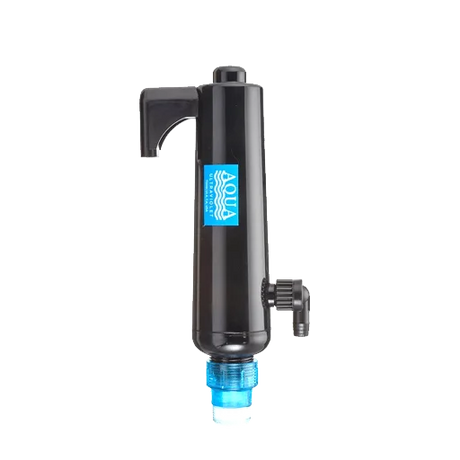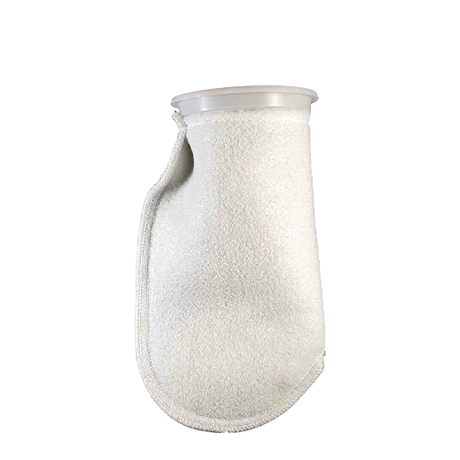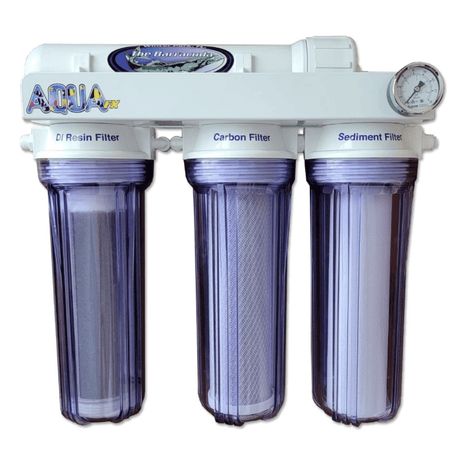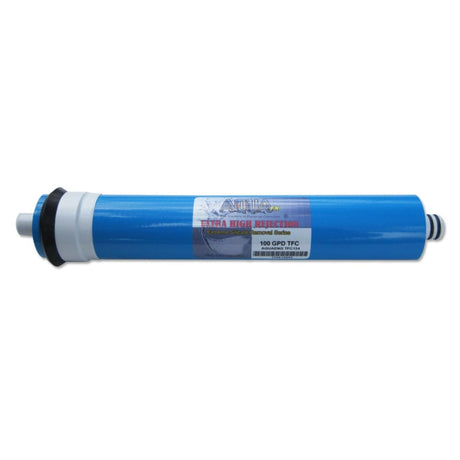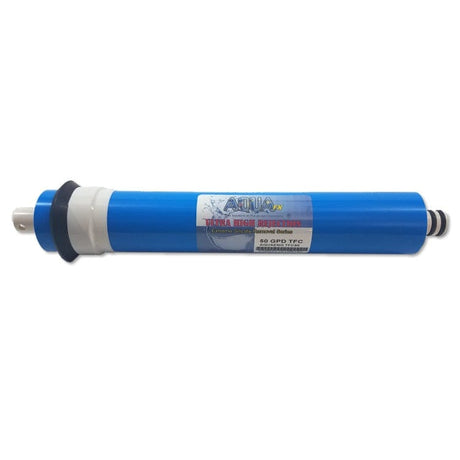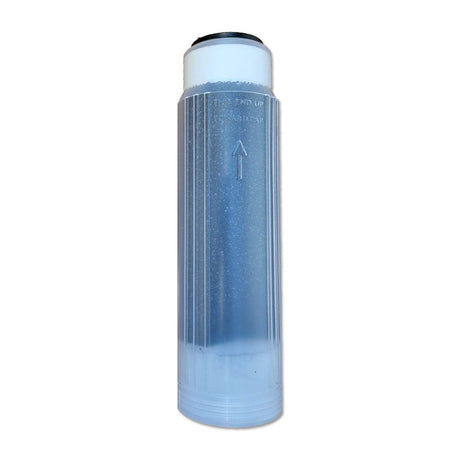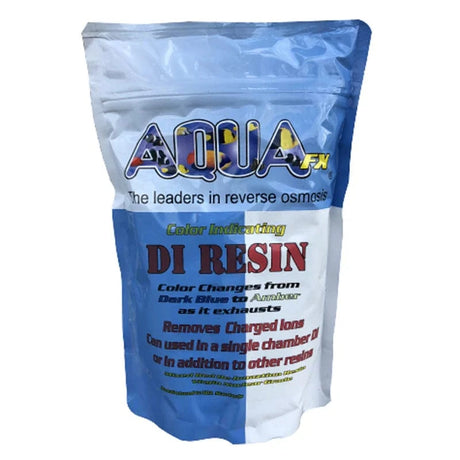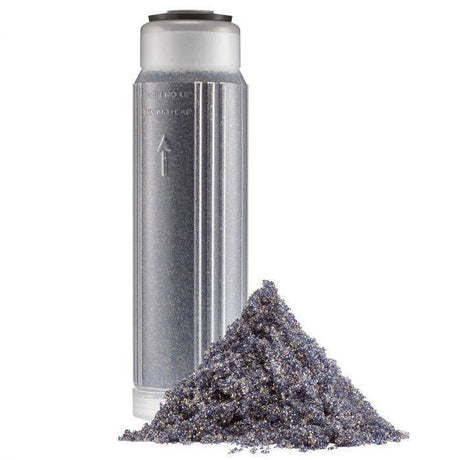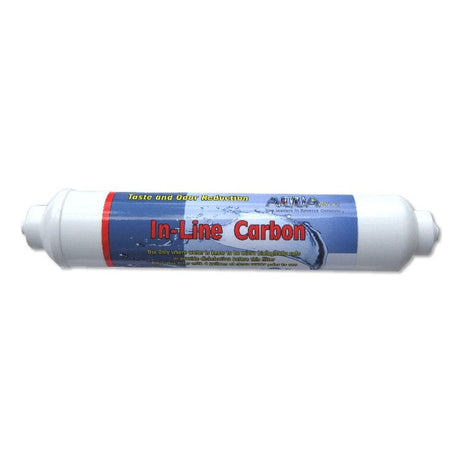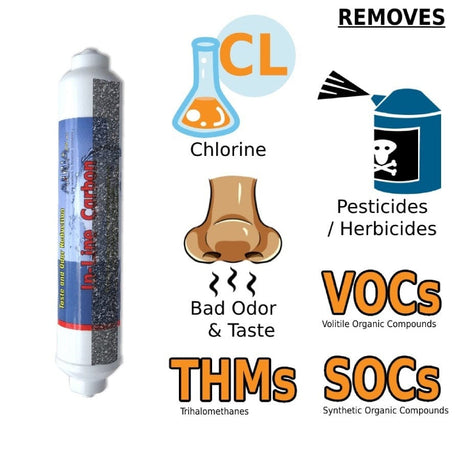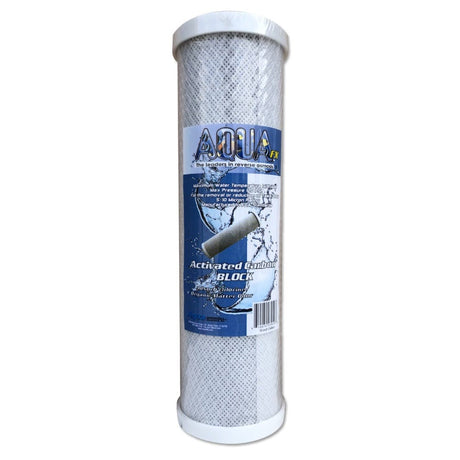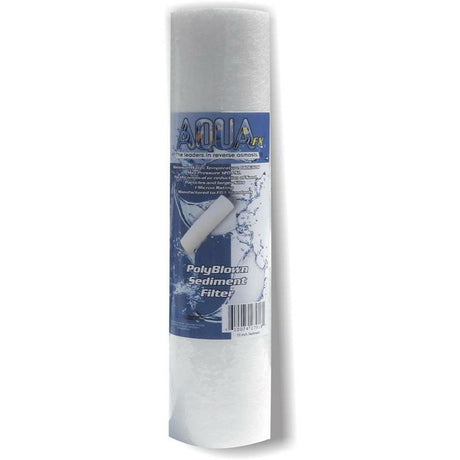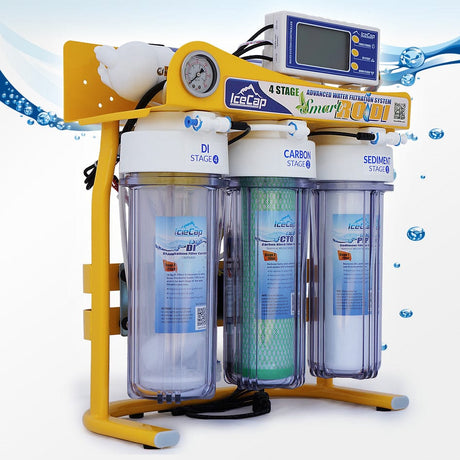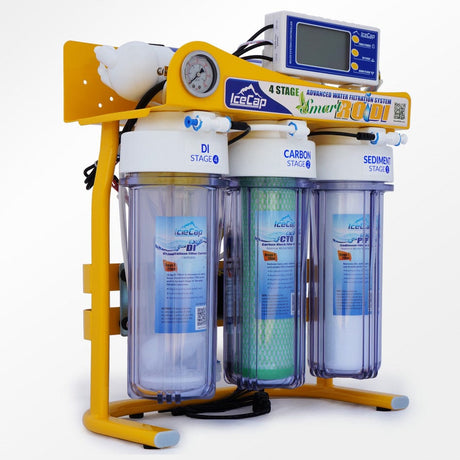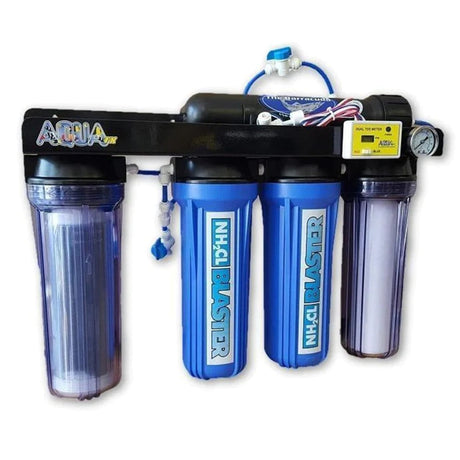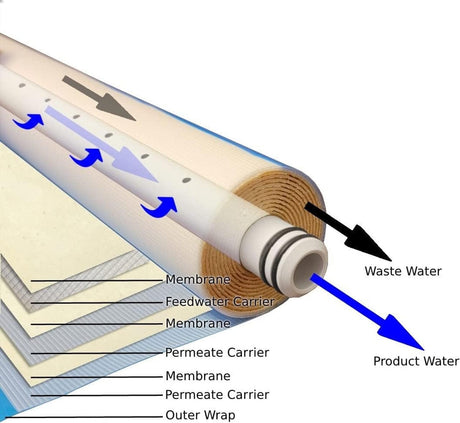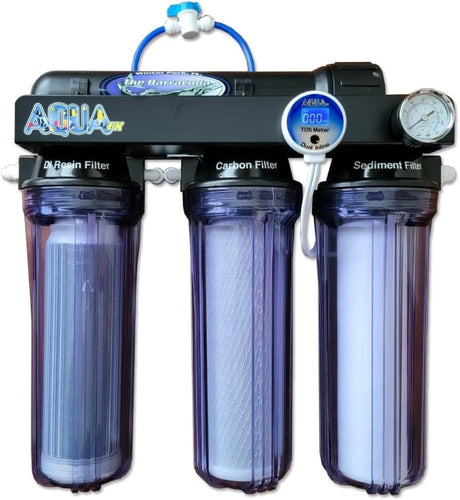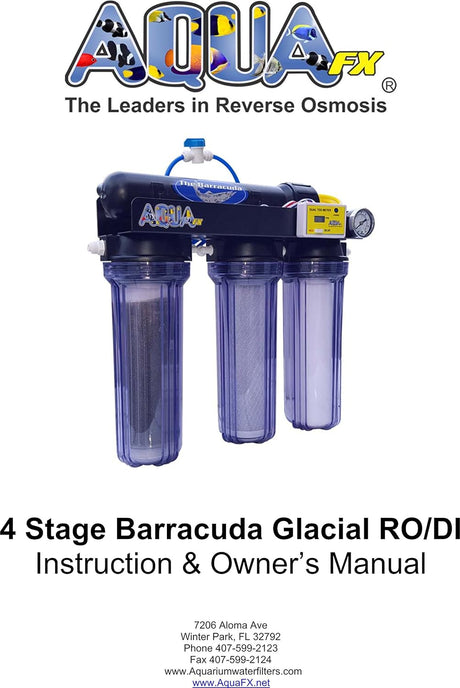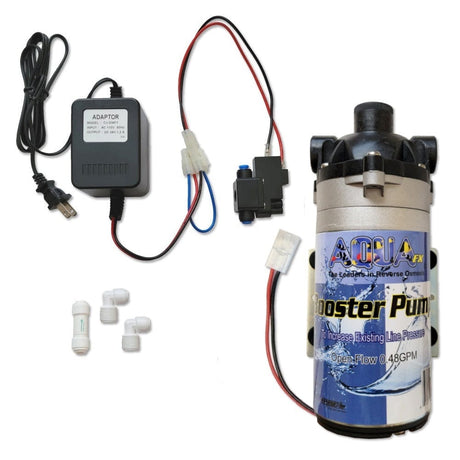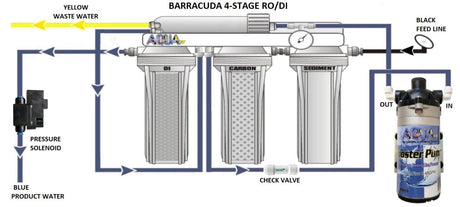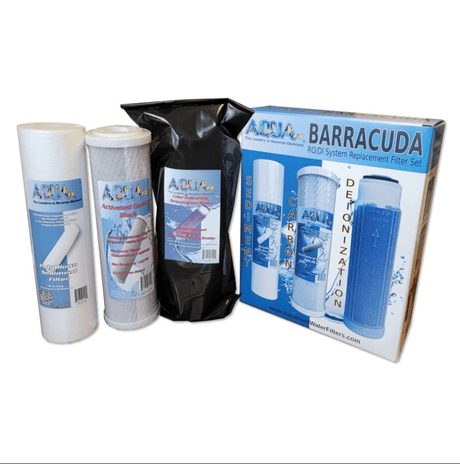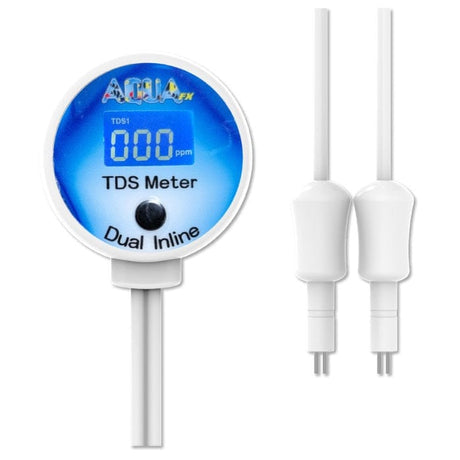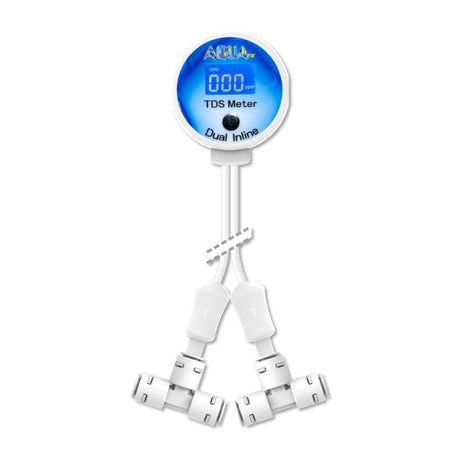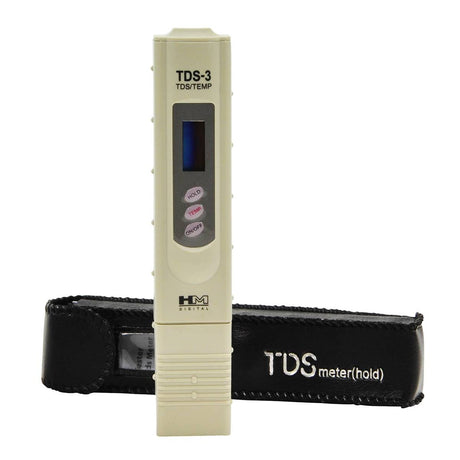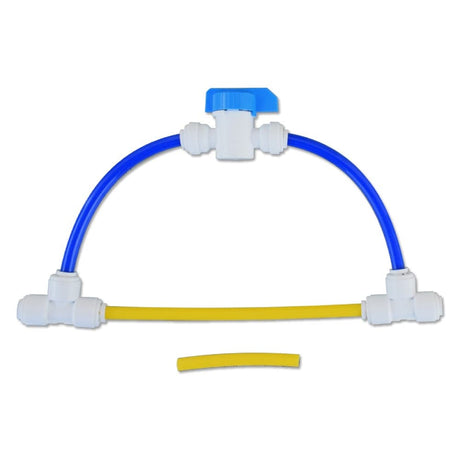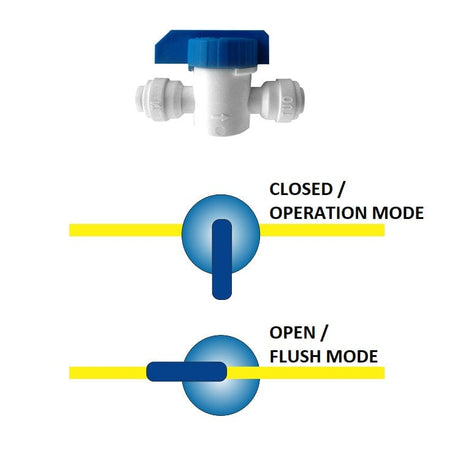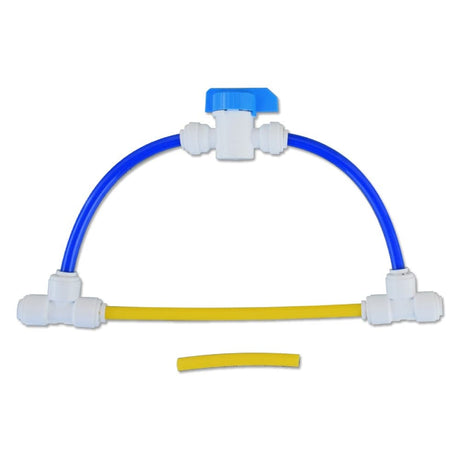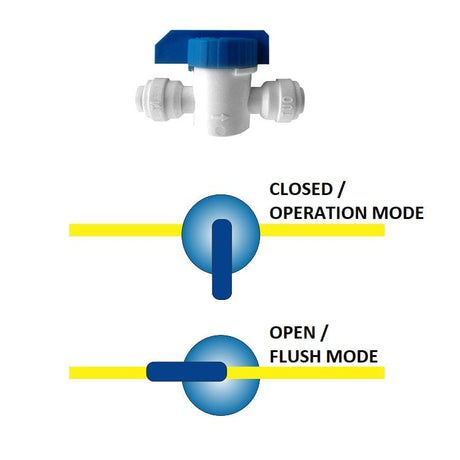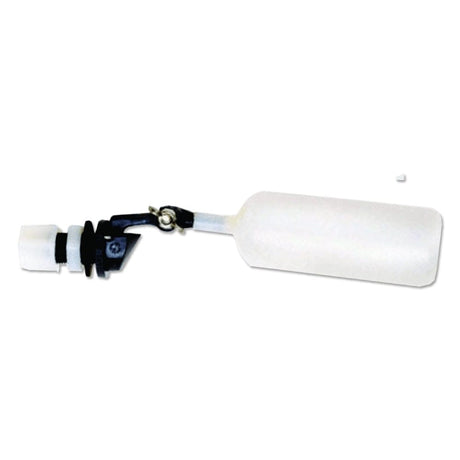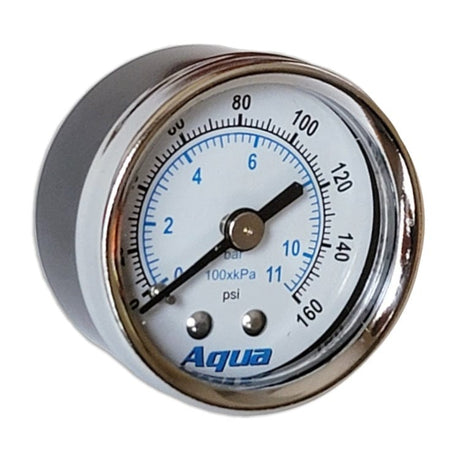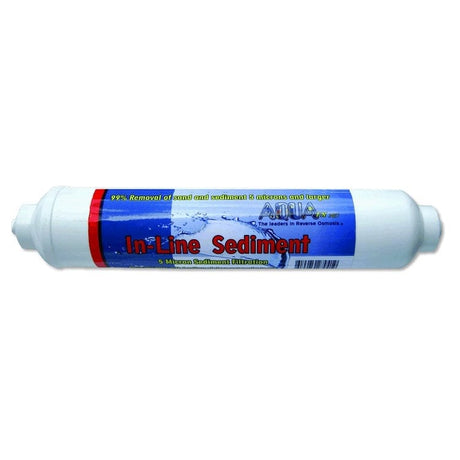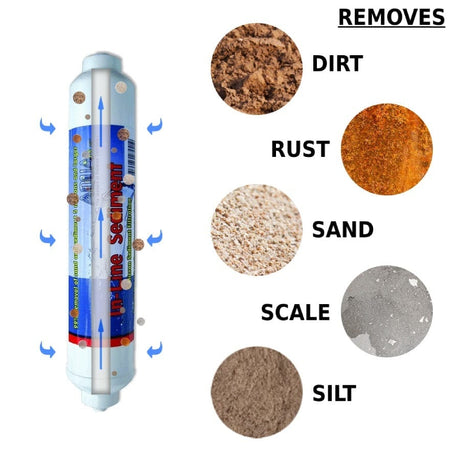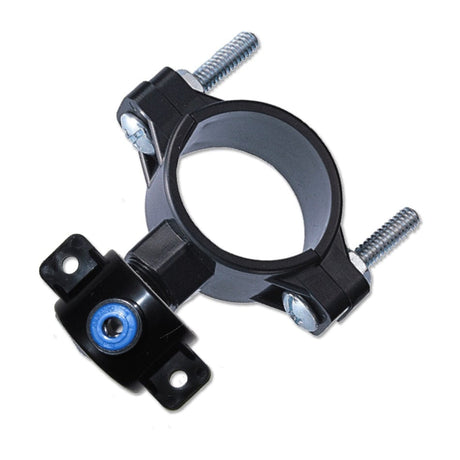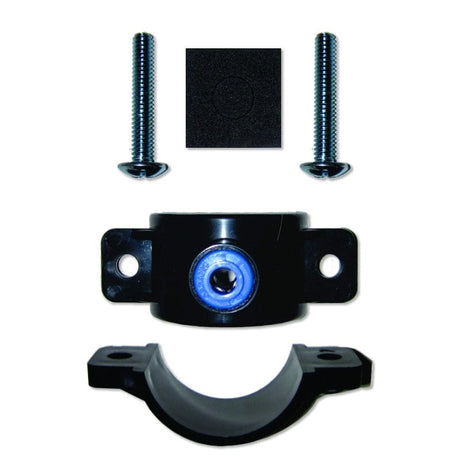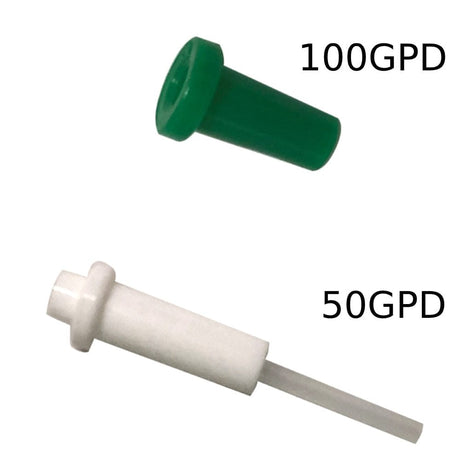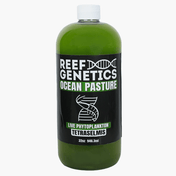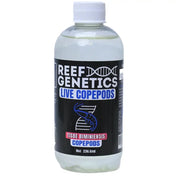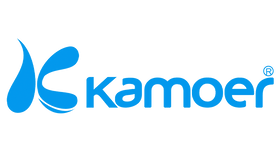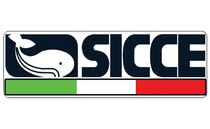Barracuda RODI Unit - Standard 100 GPD - AquaFX
$19999Unit price /UnavailableReverse Osmosis Membrane - AquaFX
From $4899Unit price /UnavailableCarbon Filter - Chloramine Blaster - AquaFX
$1899Unit price /UnavailableCarbon Filter - High Capacity - AquaFX
$1699Unit price /Unavailable- From $1499Unit price /Unavailable
Seahorse Inline Carbon - AquaFX
$1299Unit price /UnavailableCarbon Filter - Activated Carbon - AquaFX
$949Unit price /Unavailable- $599Unit price /Unavailable
IceCap RODI Smart Water Filtration System
$43999Unit price /UnavailableBarracuda RODI Unit - Glacial 100 GPD (Chloramines Upgraded) - AquaFX
$32999Unit price /UnavailableBarracuda RODI Unit - Glacial 100 GPD - AquaFX
$27999Unit price /UnavailableRO Booster Pump Kit - High Flow (300 GPD) - High Flow Kit - AquaFX
$18999Unit price /UnavailableRO Booster Pump Kit - Standard Flow (100 GPD) - AquaFX
$13999Unit price /UnavailableSeahorse 4-Stage Compact RO/DI System - AquaFX
$9499Unit price /UnavailableBarracuda 10" Replacement Filter Set - AquaFX
$4799Unit price /UnavailableDual Inline TDS Meter - AquaFX
$3999Unit price /UnavailableAutomatic Shut-Off (ASO) with Float - AquaFX
$2999Unit price /Unavailable- $2999Unit price /Unavailable
RODI Flush Kit with Ball Valve - AquaFX
$2999Unit price /UnavailableLiquid Filled Add-On Pressure Gauge Kit - 1/4" - AquaFX
$2599Unit price /UnavailableHydraulic Automatic Shut Off (ASO) - (Valve Only) - AquaFX
$1999Unit price /UnavailableRODI Flush Kit with Ball Valve - 1/4" - AquaFX
$1699Unit price /Unavailable- $1599Unit price /Unavailable
Quick-Connect Check Valve Fitting - AquaFX
From $1499Unit price /UnavailableReplacement Pressure Gauge (Gauge Only) - 1/8" - AquaFX
$1499Unit price /UnavailableSink Adapter (Diverter Valve) - AquaFX
$1199Unit price /UnavailableSeahorse Inline Sediment - 5 micron - AquaFX
$1099Unit price /UnavailableInline Sink Adapter Fitting (3/8" M x 3/8" F x 1/4" QC )
$999Unit price /UnavailableQuick-Connect Bulkhead - AquaFX
From $999Unit price /UnavailableQuick-Connect Ball Valve - AquaFX
From $799Unit price /Unavailable- From $749Unit price /Unavailable
1/8" Female NPT to 1/4" Push-Connect DOS Line Adapter
$699Unit price /UnavailableDrain Saddle with 1/4" Quick-Connect Valve Fitting - AquaFX
$599Unit price /UnavailableQuick Connect Tee Fitting - AquaFX
From $499Unit price /Unavailable90 Degree Elbow - 1/4" Insert To Push
$399Unit price /Unavailable- $399Unit price /Unavailable
Quick-Connect 90 Degree Elbow - AquaFX
From $399Unit price /Unavailable
Top RODI Filter Picks
Top RODI Filter Picks
What’s the difference between RO and RODI?
What’s the difference between RO and RODI?
How do I know when to change the filters?
How do I know when to change the filters?
Can I use well water with a RODI system?
Can I use well water with a RODI system?
What size RODI system should I get?
What size RODI system should I get?
Do I need to flush the system before using the water?
Do I need to flush the system before using the water?
